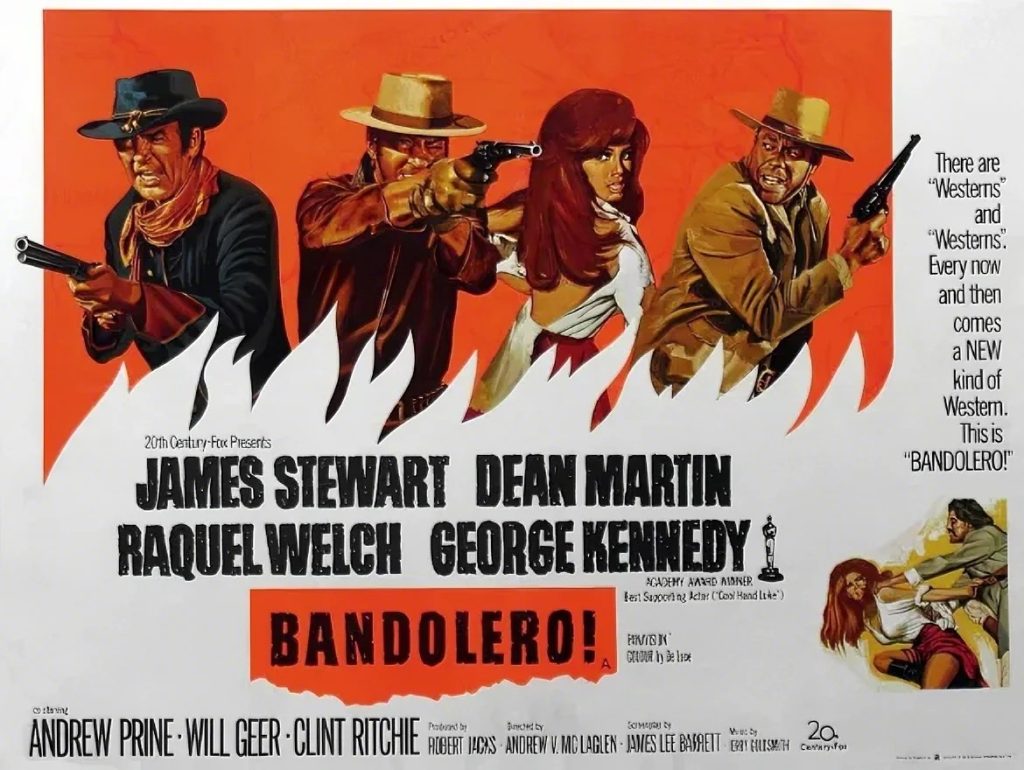“Bandolero!” is a 1968 Western film directed by Andrew V. McLaglen. Known for its blend of action, drama, and romance, the movie stars James Stewart, Dean Martin, Raquel Welch, and George Kennedy. Set against the backdrop of the rugged American Southwest, it explores themes of morality, survival, and unexpected alliances.
Plot Overview
The story begins with Dee Bishop (Dean Martin) and his gang attempting a bank robbery in Val Verde, Texas. The heist goes wrong, and the gang is captured, facing certain execution. Dee’s estranged brother, Mace Bishop (James Stewart), poses as the hangman to rescue him and the gang. In the process, Mace inadvertently kidnaps Maria Stoner (Raquel Welch), a widow caught in the chaos.
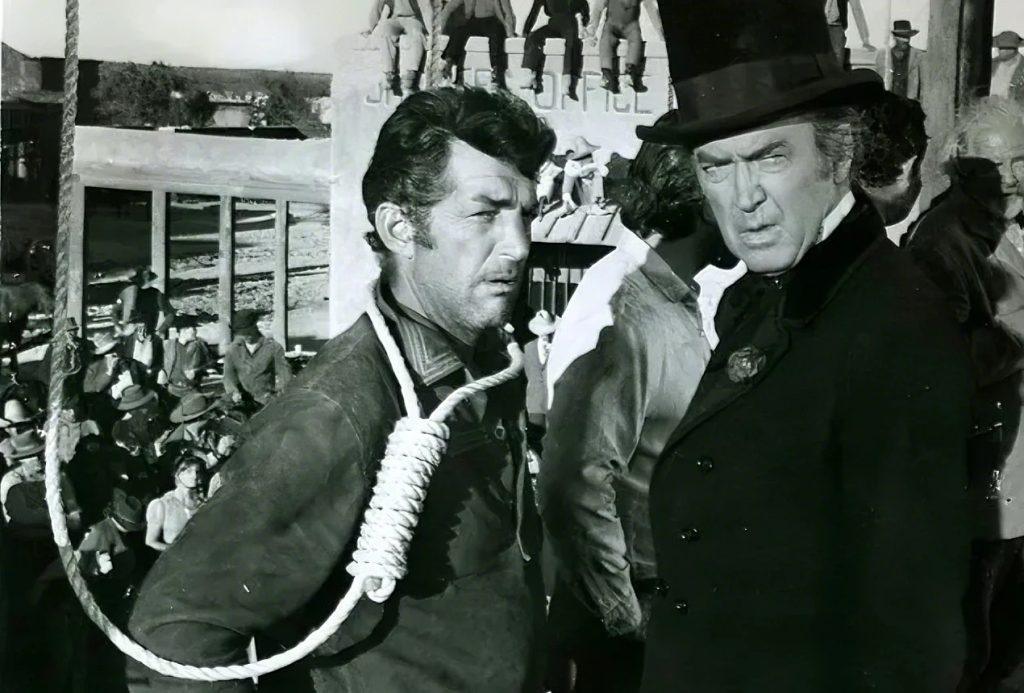
Pursued by Sheriff July Johnson (George Kennedy) and his posse, the Bishops and their gang flee into the treacherous territory of “Bandolero” country, inhabited by dangerous Mexican bandits. As tensions rise among the outlaws, Maria develops feelings for Dee, adding a layer of complexity to the group’s dynamic. The film builds to a dramatic and tragic conclusion, where the characters confront their choices and loyalties in the face of overwhelming odds.
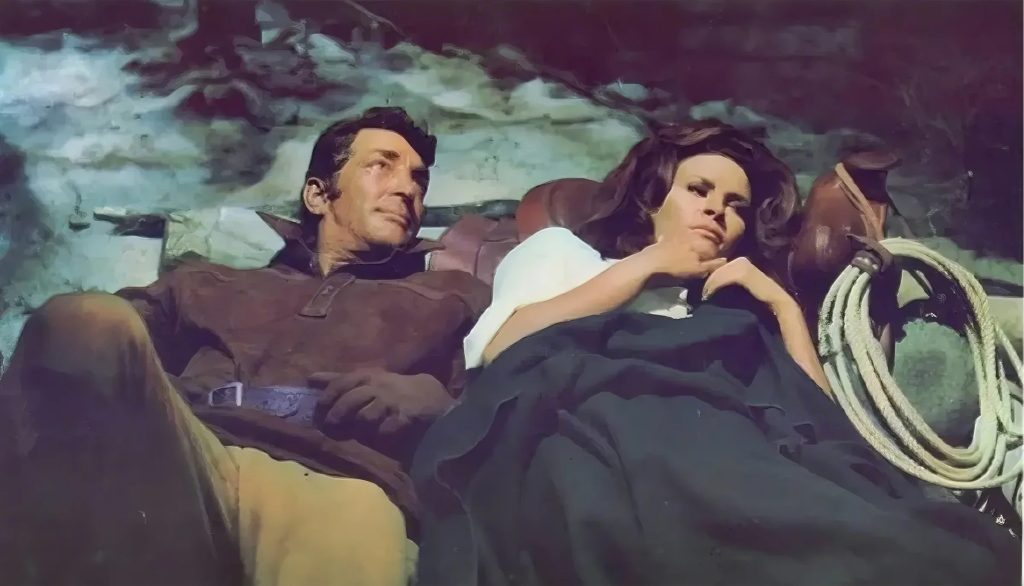
Themes and Symbolism
- Morality and Redemption: The film explores the thin line between right and wrong, as characters grapple with their past actions and search for redemption.
- Survival and Loyalty: The harsh landscape mirrors the challenges faced by the characters, emphasizing the importance of loyalty and trust.
- Love and Sacrifice: The budding romance between Maria and Dee highlights themes of love, loss, and personal sacrifice.
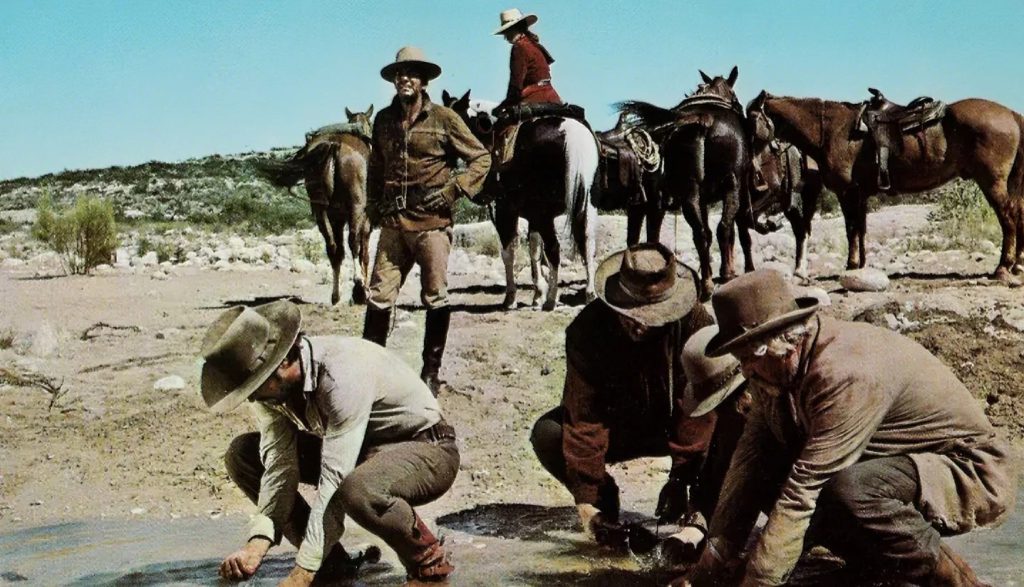
The rugged terrain and the ever-present threat of violence serve as metaphors for the moral complexities and dangers the characters navigate.
Performances
James Stewart delivers a nuanced performance as Mace Bishop, blending charm and wisdom with an underlying sense of regret. Dean Martin’s portrayal of Dee Bishop captures the character’s toughness and vulnerability. Raquel Welch brings depth and resilience to Maria Stoner, while George Kennedy’s Sheriff Johnson provides a steadfast and determined counterbalance.
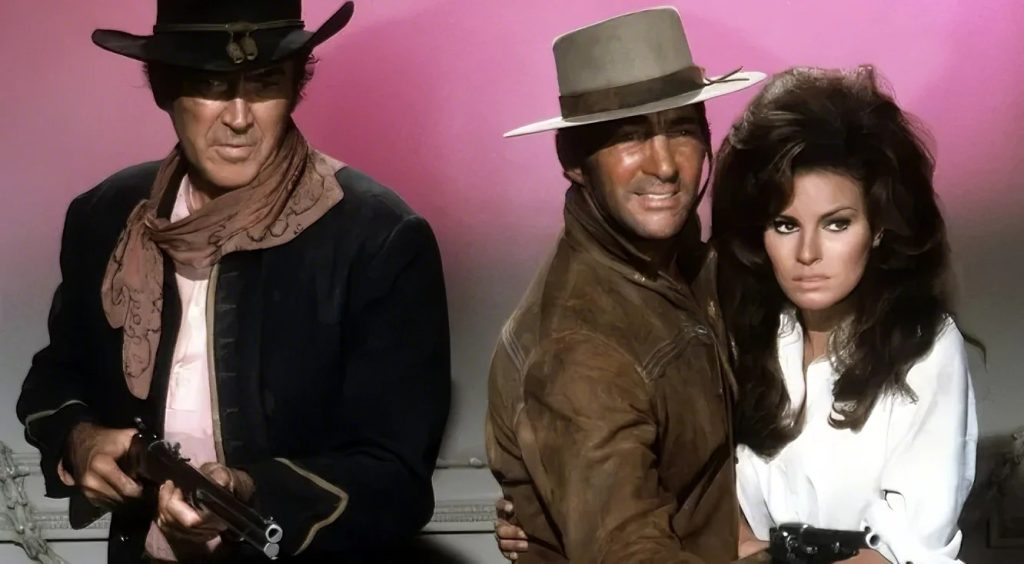
Direction and Cinematography
Andrew V. McLaglen’s direction effectively balances action, drama, and character development. The cinematography, showcasing the stark beauty of the American Southwest, enhances the film’s atmosphere. The action sequences are well-executed, creating tension and excitement while maintaining the story’s emotional core.

Critical Reception
“Bandolero!” received positive reviews for its engaging story, strong performances, and picturesque visuals. Critics praised its ability to blend traditional Western tropes with emotional depth. While some noted its adherence to genre conventions, others appreciated its character-driven approach and poignant themes.
Conclusion
“Bandolero!” (1968) is a classic Western that combines action, romance, and moral complexity. With memorable performances, striking visuals, and a compelling narrative, it remains a standout entry in the genre. Fans of Westerns and character-driven dramas will find much to enjoy in this timeless tale of love, loyalty, and survival.
